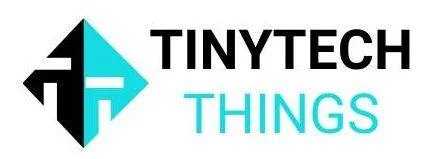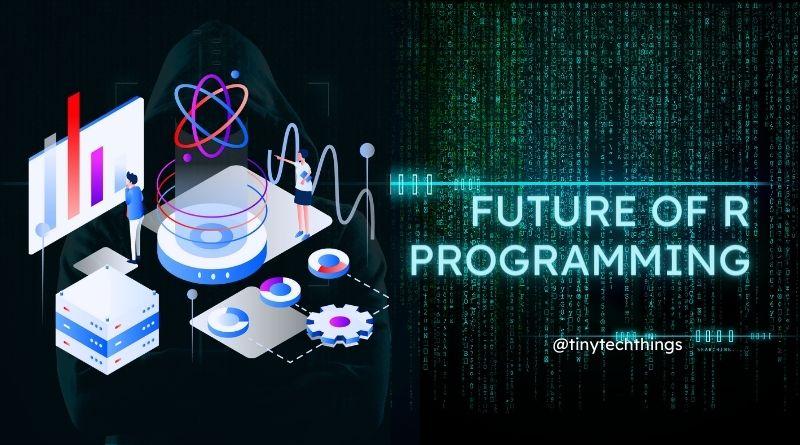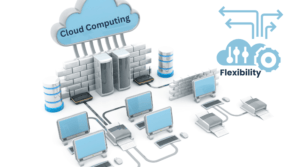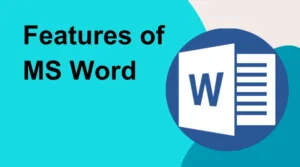The future of R is exciting for data science and analytics. R is a statistical analysis and graphics programming language. It is becoming increasingly important as businesses and industries rely more on data-driven insights. In this article, we will explore the Future of R, its applications, advantages, challenges, and what the future holds for this powerful language.
Table of Contents
Future of R Programming
The Birth of R
R was developed in the late 1990s as an open-source statistical computing and graphics language. It was built upon the foundation of the R programming language and aimed to provide a free and powerful tool for data analysis.
Growth and Popularity
Over the years, R has gained significant popularity among statisticians, data scientists, and analysts. Its extensive collection of packages and active community support have contributed to its widespread adoption across various industries.
Future of Data Science with R
Data Analysis and Visualization
R is a popular programming language for data analysis and visualization. It offers a wide range of statistical techniques and powerful visualization libraries that help users explore and understand their data effectively.
Statistical Modeling and Inference
R provides tools for statistical modeling and inference. Users can perform hypothesis testing, regression analysis, and other statistical techniques to draw conclusions from data.
Predictive Analytics and Machine Learning
R has gained popularity in predictive analytics and machine learning. It offers libraries and functions for building predictive models and performing machine learning tasks such as classification and regression.
R vs. Other Programming Languages
Python vs. R
R and Python are two popular languages for data analysis. While Python is a general-purpose language, R is specifically designed for statistical computing. Both have their strengths and use cases in the data analysis field.
Java vs. R
Java is a widely used programming language, while R is focused on statistical analysis. The choice between Java and R depends on the specific requirements of the project.
Benefits of R Programming
Rich Set of Statistical Packages
R offers a rich collection of statistical packages that provide ready-to-use functions for various data analysis tasks. This makes it convenient for users to perform complex analyses without having to write code from scratch.
Extensive Data Visualization Capabilities
R provides powerful visualization libraries that allow users to create visually appealing and informative charts and graphs. These visualizations help in understanding data patterns and communicating insights effectively.
Flexibility and Customization
R is a highly flexible language that allows users to customize and extend its functionality. Users can write their functions and packages to tailor R to their specific needs.
Challenges and Limitations of R
Performance and Scalability
R may face performance challenges when dealing with large datasets or computationally intensive tasks. However, there are techniques and optimizations available to address these issues.
Steep Learning Curve
R has a steeper learning curve compared to some other programming languages due to its extensive functionality and syntax. However, with proper guidance and practice, users can become proficient in using R.
Future Trends in R Development
Integration with Big Data Technologies
R is adapting to handle big data by integrating with technologies like Apache Hadoop and Spark. This allows users to process and analyze large-scale datasets efficiently.
Enhanced Machine Learning Capabilities
R is continuously evolving to incorporate advancements in machine learning. Users can expect more powerful tools and algorithms for solving complex problems in the future.
Role of R in Data Science
R as a Data Science Tool
R plays a significant role in data science. Its comprehensive set of tools and libraries make it a preferred choice for data scientists to perform data manipulation, analysis, and visualization.
Data Manipulation and Wrangling in R
R provides user-friendly packages for data manipulation and wrangling. These packages make it easier to clean and transform data, preparing it for further analysis.
Exploring Machine Learning with R
Machine Learning Basics with R
R offers a wide range of libraries and functions for machine learning. Users can explore and apply various machine learning algorithms to build predictive models.
Popular R Libraries for Machine Learning
R hosts several popular machine learning libraries, such as caret, randomForest, and xgboost. These libraries provide pre-implemented algorithms and tools for building models.
Statistical Analysis using R
Statistical Analysis Fundamentals in R
R provides a comprehensive set of functions and packages for statistical analysis. Users can perform various statistical tests, estimate parameters, and build regression models.
Hypothesis Testing and Regression Analysis in R
R offers a wide range of techniques for hypothesis testing and regression analysis. Users can analyze relationships between variables and make informed decisions based on statistical evidence.
R in Visualization
Data Visualization Principles
R emphasizes the importance of data visualization for effective communication of insights. Users can create visually appealing plots and charts using R’s visualization libraries.
Exploratory Data Analysis with R
R provides powerful tools for exploratory data analysis. Users can generate descriptive statistics, visualize data distributions, and uncover patterns and relationships.
R in Big Data Analytics
Big Data Challenges and R
R is adapting to handle big data challenges by integrating with technologies like Apache Hadoop and Spark. This allows users to analyze large-scale datasets efficiently.
R Packages for Big Data Analytics
R offers packages that facilitate big data analytics, such as dplyr and sparklyr. These packages provide efficient data manipulation and analysis capabilities for big data.
R in Business Analytics
Leveraging R for Business Insights
R is widely used in business analytics to extract insights from data. It helps companies in analyzing consumer behavior, forecasting trends, and make data-driven choices.
Customer Analytics with R
R’s capabilities in data analysis and visualization make it valuable for customer analytics. Businesses can use R to segment customers, analyze purchasing patterns, and personalize marketing strategies.
R Packages and Libraries
Comprehensive R Packages for Data Science
R hosts a wide range of packages specifically designed for data science. These packages provide functions and tools for data manipulation, analysis, and modeling.
Popular Libraries for Data Visualization in R
R’s visualization libraries, such as ggplot2 and plotly, are widely used for creating visualizations. These libraries offer customization options to create visually appealing and informative plots.
R and Open Source Community
Collaborative Development in R
R benefits from a collaborative open-source community. Developers contribute to the development of R packages, ensuring continuous improvement and innovation.
R Community Contributions
The R community actively contributes through forums, conferences, and online platforms. Members share knowledge, provide support, and collaborate on projects to enhance R’s capabilities.
R and Industry Adoption
R in Healthcare and Life Sciences
R is widely used in healthcare and life sciences for data analysis and research. It helps researchers analyze experimental data and perform statistical analyses.
R in Finance and Banking
Finance and banking industries use R for risk modeling, financial analysis, and forecasting. R’s statistical modeling capabilities make it valuable in these domains.
R in Academia
R in Research and Academic Publishing
R is widely used in academia for statistical analysis and data visualization. Researchers rely on R for analyzing experimental data and publishing research findings.
Teaching and Learning R
Many universities and educational institutions incorporate R into their curriculum to teach statistical analysis and data science concepts. R provides valuable skills for students pursuing careers in data science.
R Job Market
Demand for R Professionals
The demand for skilled R professionals is increasing as organizations rely more on data analysis and insights. Data scientists, statisticians, and analysts proficient in R are sought after in various industries.
Career Opportunities in R
A career in R offers diverse opportunities, including roles such as data scientist, statistician, and business analyst. Professionals with R expertise have promising career prospects in the data science field.
Learning R
Getting Started with R
Getting started with R may seem daunting, but it can be an enjoyable journey. Install R and an integrated development environment (IDE) like RStudio, and explore tutorials and online courses to learn the basics.
Online Resources for Learning R
Numerous online resources, tutorials, and courses are available for learning R. Platforms like DataCamp and Coursera offer comprehensive learning paths and interactive exercises for beginners.
R Community and Support
Engaging with the R Community
Engaging with the R community can enhance learning and professional growth. Join online forums, user groups, and attend conferences to connect with fellow R enthusiasts and seek support.
You can follow RStudio
R Support and Forums
R has a vibrant online community that provides support through forums and discussion platforms like Stack Overflow and R-help. These platforms offer solutions to coding problems and share knowledge.
Ethical Considerations in R
Data Privacy and Security
R has a vibrant online community that provides support through forums and discussion platforms like Stack Overflow and R-help. These platforms offer solutions to coding problems and share knowledge.
Bias and Fairness in Algorithms
R users should be aware of potential biases in algorithms and take steps to address them. Ensuring fairness in decision-making processes is essential to avoid biased outcomes.
R and the Future of Data Science
The Role of R in Advancing Data Science
R continues to play a significant role in advancing data science. Its tools and libraries empower data scientists to extract insights and solve complex problems using statistical analysis and machine learning.
Innovations and Emerging Technologies
R is evolving to incorporate emerging technologies like deep learning and automated machine learning. These innovations will enable users to tackle new challenges and unlock the full potential of data.
R in Artificial Intelligence
AI Applications with R
R provides tools and frameworks for developing AI applications. Users can implement algorithms, train models, and deploy intelligent systems using R’s capabilities.
Deep Learning with R
R offers libraries like Keras and TensorFlow for deep learning. Users can build and train deep neural networks for advanced applications in computer vision and natural language processing.
R in Internet of Things (IoT)
IoT Data Analytics with R
R is used for analyzing IoT data generated by sensors. Users can preprocess, analyze, and visualize IoT data to gain insights for data-driven decision-making.
Sensor Data Processing in R
R’s data manipulation and statistical capabilities make it suitable for processing sensor data in IoT applications. Users can extract valuable information from sensor measurements and derive insights.
Conclusion
In conclusion, the future of R looks promising in the realm of data science and analytics. R’s versatility, extensive functionality, and active community support make it a go-to language for data analysis and modeling. With advancements in technology, R will continue to play a pivotal role in unlocking insights from data. Whether you’re a beginner or an experienced professional, learning and embracing R opens up a world of opportunities in the data-driven future.
FAQs
Yes, R programming is beginner-friendly, with a supportive community and numerous learning resources available online.
Yes, R programming has capabilities for handling large datasets, and there are packages specifically designed for efficient data processing.
No, R programming can be useful for professionals in various fields, including finance, healthcare, social sciences, and business analytics.
Yes, there is a growing demand for professionals with R programming skills, particularly in data analysis, machine learning, and business intelligence.
There are several online platforms and tutorials available for learning R programming, such as online courses, documentation, and interactive coding platforms.





